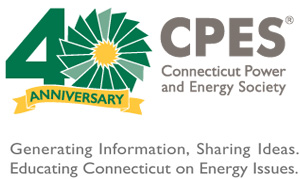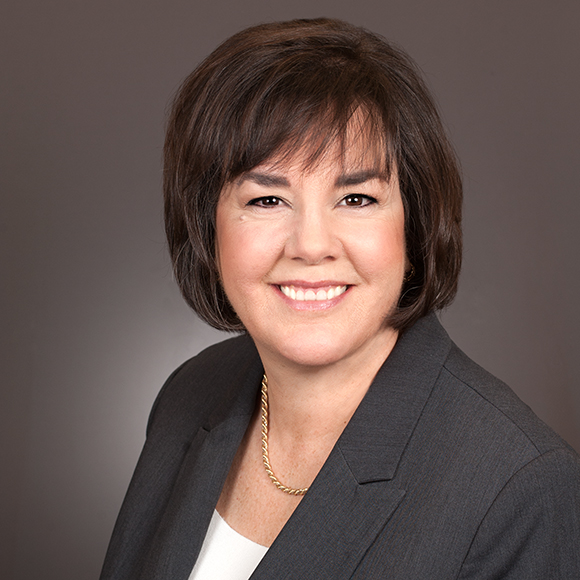This update features policy, regulatory, legislative, and regional developments in Connecticut and New England. The policy updates are compiled by the CPES New Energy Professionals Team. If you are interested in learning more about the New Energy Professionals, the Policy Committee, or if you have ideas for future policy updates, we would welcome your input and feedback. Please send comments to Kathryn Dube, CPES Executive Director, via email: kdube@ctpower.org.
- MA Preliminary 2018 SREC I and II Minimum Standards and
Solar Program Administrator RFP - Consumers Fare Better With Competitive Electricity Market
REGIONAL NEWS:
Solar Program Administrator RFP Posted
Earlier today, the electric distribution companies issued a Request for Proposals to select a Solar Program Administrator for the SMART program. Interested bidders must be registered within the Eversource “SAP Ariba Sourcing” purchasing system. More details and a copy of the RFP can be found on DOER’s website.
Preliminary 2018 SREC I and II Minimum Standards
Pursuant to 225 CMR 14.07(2) and (3), the Department of Energy Resources (DOER) is required to calculate the Solar Carve-out and Solar Carve-out II Compliance Obligations and Minimum Standards for each Compliance Year by no later than August 30th of the preceding year. As has been the practice to date, DOER announces a preliminary Compliance Obligation and Minimum Standard prior to conducting the Solar Credit Clearinghouse Auctions (“Auctions”) each July. For Compliance Year 2018, the formula in 225 CMR 14.07(2)(g) will be used to calculate the Solar Carve-out Compliance Obligation, and the formula in 225 CMR 14.07(3)(e) and (f) will be used to calculate the Solar Carve-out II Compliance Obligation.DOER emphasizes that this is only a preliminary announcement and that final Minimum Standards will be announced no later than August 30th.
Solar Carve-out (SREC I Program) Based on the information available at this time, DOER estimates that the 2018 Compliance Obligation for the SREC I Program will be approximately 838,995 MWh and that the Minimum Standard will be approximately 1.7903%. Should this year’s SREC I Auction not fully clear in the first two rounds, the 2018 Compliance Obligation and Minimum Standard will be increased to 857,423 MWh and 1.8296%, respectively. The details of how this preliminary Minimum Standard was calculated are available on the DOER’s website.
Solar Carve-out II (SREC II Program) Pursuant to 225 CMR 14.07(3)(a)1, all Retail Electricity Suppliers are exempt from any incremental obligations resulting from the provisions contained in the RPS Class I Emergency Regulation filed on April 8, 2016, which expanded the Solar Carve-out II (SREC II) Program Capacity Cap. As such, it is necessary for DOER to establish a baseline Compliance Obligation and Minimum Standard that would have applied had the Emergency Regulation not been filed.
To determine this baseline Minimum Standard, DOER analyzed the percentage shares of MW qualified under each of the four SREC II Market Sectors at the time the extension was announced. DOER then multiplied these percentages by the original 947.7 MW SREC II Program Capacity Cap. DOER multiplied these totals by the applicable SREC Factors, a 13.71% expected capacity factor, and 8,760 hrs/year and determined the expected MWh/year that would have resulted had the SREC II Program Capacity Cap remained 947.7 MW. Lastly, DOER added the remaining auction certificates available from 2015 as well as the auction certificates and banked SREC II volume from the 2016 Compliance Filings. This yields a total baseline Compliance Obligation of 1,347,902 MWh and a Minimum Standard of 2.8762%
If the upcoming SREC II Auction does not fully clear in the first two rounds, the baseline Compliance Obligation and Minimum Standard for 2018 will be 1,591,279 MWh and 3.3955%, respectively.
Using all of the available information at this time, DOER has also calculated the preliminary 2018 SREC II Compliance Obligation and Minimum Standard for load under contracts signed on or after May 8, 2016. DOER has determined that the Compliance Obligation will be approximately 1,923,743 MWh and that the Minimum Standard will be approximately 4.1049%. Should this year’s SREC II Auction not fully clear in the first two rounds, the 2018 Compliance Obligation and Minimum Standard will be increased to 2,167,120 MWh and 4.6242%, respectively. The details of how this preliminary Minimum Standard was calculated are also available on the DOER’s website.
Next Steps
The first rounds of both the SREC and SREC II Solar Credit Clearinghouse Auctions are scheduled to take place on July 24, 2017. Should these auctions not fully clear, second and third rounds will be held as necessary on July 25, 2017 and July 28, 2017, respectively. Once both auctions have concluded, DOER will be able to make its final determination of the Compliance Obligations and Minimum Standards for 2018. The announcement of these final Minimum Standards will occur no later than August 30, 2017. More information on the auctions taking place later this month is available on the DOER’s auction website.
OP-ED FROM MORNING CONSULT, JULY 12, 2017:
CPES does not take a position on this Op-Ed piece; this is provided for informational purposes only to CPES members.
Consumers Fare Better With Competitive Electricity Markets
DARRIN PFANNENSTIEL
Policymakers across the country are grappling with a stunning transition under way in the United States’ $380 billion electricity sector. Electricity consumption is flat, cleaner energy sources are dramatically increasing market share while nuclear and fossil fuel generation plants struggle to maintain economic viability, and new consumer-empowering technology innovations promise to transform how households and businesses use energy.
The U.S. electricity sector hasn’t seen such foment since 20 years ago, when state and federal policymakers began to introduce competitive reforms to the staid monopoly-regulated electric utility industry. While the Federal Energy Regulatory Commission acted to establish the wholesale power markets that now dominate most of the country, many states acted to open up retail markets so that for the first time in more than a century electricity consumers could choose from among competing suppliers.
Indeed, until California’s well-intentioned but poorly conceived first-in-the-nation experience with electricity competition, it appeared that a majority of states across the country would restructure their electricity markets to enable competition. But after California, some states poised to enact restructuring declined to do so, and others that had adopted competitive reforms reversed course.
Nevertheless, slightly more than a dozen states and the District of Columbia, which account for one-third of all electricity generation and consumption in the country, persisted with the task. They learned from California’s mistakes and created vibrant retail competition programs that have grown and prospered over the past 20 years, benefiting consumers with abundant choices among increasingly innovative, clean and cost-competitive electricity product and service offerings.
So for two decades we’ve had what U.S. Supreme Court Justice Louis Brandeis described as laboratories of democracy at work, with one set of states preserving monopoly utility regulation while another set pursued competition and customer choice.
And as shown in a new white paper commissioned by the Retail Energy Supply Association, entitled “RESTRUCTURING RECHARGED — The Superior Performance of Competitive Electricity Markets 2008-2016,” the verdict is in: Consumers with competitive choice are disproportionately benefiting. Using U.S. Energy Information Administration data, the white paper by Philip R. O’Connor, Ph.D., former chairman of the Illinois Commerce Commission, found that competitive choice jurisdiction customers fared demonstrably better in terms of price, investment and efficiency than did those who remained under monopoly regulation.
Weighted average prices in the group of 35 monopoly states have risen nearly 15 percent while in the 14 competitive markets total weighted average prices have declined 8 percent. Inflation-adjusted price changes for major customer classes in choice and monopoly states are starkly different, declining 18 percent for customers in competitive jurisdictions compared to the experience in monopoly states.
It is no surprise then that relatively sophisticated commercial and industrial electricity customers have widely embraced competition, and we’ve a seen a majority of customers in those classes benefit by purchasing electricity from non-utility suppliers in competitive choice states, particularly as competition enables access to cleaner energy supply options. But residential customers are increasingly benefiting from the competitive marketplace too.
Between 2003 and 2008, the number of residential accounts served in competitive jurisdictions by non-utility providers more than tripled from about 2.3 million to 7.1 million, and more than doubled again since to average more than 16.4 million annually. For jobs-producing commercial and industrial customers, between 2003 and 2008 those served by non-utility suppliers grew 240 percent, from 436,000 to nearly 1.6 million. Since then we’ve seen a near doubling again with competitive commercial and industrial accounts averaging more than 2.9 million and exceeding 3 million in 2016.
Dr. O’Connor’s analysis also found a sharp contrast between the two sets of states in terms of innovation. Competitive choice jurisdictions are enabling innovation in customer-empowering alternatives such as “green” energy options and smart thermostats that allow customers to better manage how and when they use electricity. Monopoly utilities, meanwhile, are inherently inhospitable to innovation, his analysis found. This is especially important when one considers the many innovative ideas emerging from Silicon Valley that will power the electricity sector and consumers into a clean energy future.
It is against this backdrop of growing evidence that competitive markets are delivering real and tangible benefits in terms of pricing and innovation that policy makers in several states are beginning to consider once again taking steps to introduce competition in electricity to retail customers. Given the demonstrably superior performance of retail choice markets, a coming second wave of retail electricity market restructuring has begun, as evidenced by ongoing debates in Nevada and California.
Consumers want and expect choices. Given the stunning economic and technological transformation underway in the electricity industry, it makes little sense to cling to a monopoly regulatory model for electricity that is a vestige of 19th century economic thinking and a barrier to the efficient 21st century clean-energy economy that consumers and policymakers seek to embrace.
Darrin Pfannenstiel, senior vice president and associate general counsel for Stream, a Dallas-based competitive retail energy supplier, is president of the Retail Energy Supply Association, a broad and diverse group of retail energy suppliers who share the common vision that competitive retail electricity and natural gas markets deliver a more efficient, customer-oriented outcome than the regulated utility structure.
https://morningconsult.com/opinions/consumers-fare-better-competitive-electricity-markets/

 Hartford, CT (July 1, 2016) – Connecticut Power and Energy Society (CPES) welcomed new Board Member Carolyn Morrison (Webster Bank, Waterbury, Connecticut) during their June meeting held at the Courtyard Marriott, Cromwell, Connecticut.
Hartford, CT (July 1, 2016) – Connecticut Power and Energy Society (CPES) welcomed new Board Member Carolyn Morrison (Webster Bank, Waterbury, Connecticut) during their June meeting held at the Courtyard Marriott, Cromwell, Connecticut.